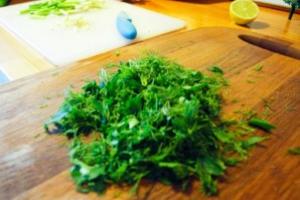An unpleasant coating on the soil in flower pots initially shocks novice gardeners, but the enemy is not as terrible as it seems at first glance. Everyone can take proper care of plants and be able to get rid of grayish or white film on the soil. It is necessary to fight mold, as it is very harmful to flowers, especially young seedlings; plants can die without proper care.
Causes of mold
The main cause of mold is a fungal infection, but a fertile environment for it is created by the grower’s inadequate care of the plants, which creates all the conditions for the development of pathogenic microorganisms. The main factors in the formation of flower disease:
- Quite low temperature in the room.
- High humidity, it is in a humid environment that fungal organisms instantly multiply.
- Insufficient water circulation in the pot.
- Frequent uncontrolled watering, you need to know the amount of liquid for each type.
- The quality of the soil, its increased acidity or heaviness, helps the development of the fungus.
Types of mold in flower pots
There are a huge number of varieties of mold fungi. Representing colonies developing from spores, they are constantly present in the air. As soon as the necessary humidity and temperature are created, fungi begin to develop at breakneck speed. To understand the situation, let's look at the most common types of mold.
Black mold
In fact, it can take on different shades. It loves moisture very much and can develop not only on materials, but also on products. Certain types of mushrooms of this family are even used in the pharmaceutical industry. The most unpleasant for humans, it can cause allergies and breathing problems. Very common indoors.
White mold
This family is most often found on soil, trees, plants, and sometimes on bread. Flower pots are one of the best environments for these fungi. It is necessary to distinguish salt deposits from mold; the first has a crystalline form, while the second is easily kneaded in the hands.
Blue fungi
These microorganisms are especially harmful to tree fiber. Corroding wood from the inside, they completely decompose tree species. They have a specific pale blue color.
Actinomycetes
They resemble algae and greatly soften the wood. It is important to distinguish them from other species in order to fight in the most effective way, because each family has its own poison.
Efflorescence
The most common type of mold, which is a salt or alkaline coating that has a white, sometimes colored tint. It is dangerous because it crystallizes not only on the surface, but also inside the environment.
Why is mold dangerous for flowers?
Mold formations lead to disruption of the normal functions of the plant. By disturbing the soil environment, fungi deprive flowers of the necessary substances on which they feed. Rotting of the roots and stems of young shoots leads to the fact that one day you will find dead plants in a flower pot. The visual effect is a small thing compared to the damage caused by fungal growths to indoor flowers.
How to get rid of mold
In the fight against mold, the main thing is the timeliness and effectiveness of the procedures performed. The most important thing to do:
- At the first sign of mold growth on the soil, remove it immediately upper layer, the penetration of fungi very quickly develops deeper and deeper inside.
- Replace the removed layers of soil with new soil with useful additives, activated charcoal, charcoal, and sphagnum moss. These additives not only act as moisture filtrates, but also have a bactericidal effect.
- The renewed soil must be watered with a special solution. To do this, add two grams of foundationazole per liter of water. If mold has already infected the plant itself, you can spray the stems and leaves with this product.
- Loosen the top layer of soil regularly to improve moisture circulation and prevent stagnation.
- Dissolve half a teaspoon citric acid in a glass of water and water the flowers with this solution twice a month to neutralize fungi in the ground.
Prevention of mold formation
It is easier to prevent mold than to fight it. To do this you need:
- make drainage in the soil using ground gravel;
- water the flowers rarely, but abundantly;
- use filtered water;
- periodically prepare a weak solution of manganese for irrigation;
- monitor the air humidity in the room;
- dig the garlic cloves near the flower, remove them after watering and drying the soil.
As you can see, the precautions are quite simple and do not require much effort.
Pay due attention to your indoor pets; flowers are living beings for which humans are responsible.
Video: saving indoor plants from pests and diseases
Mold can appear under the influence of the following factors:
- Improper watering of the plant causes water accumulation and increased soil moisture.
- Low temperature in the room where the flower grows.
- Poor functioning of the drainage system: the holes must correspond to the size of the container, otherwise they will become clogged and water will stagnate in the ground. The first manifestations of mold can be observed within two days.
- Watering with cold water.
- Poor quality soil.
The appearance of mold
The proliferation of fungus is provoked by increased moisture levels and insufficient ventilation. Most often observed in spring and autumn period. This is due to the fact that the room is quite cold, which is why moisture evaporates slowly. Why else does mold appear in flower pots? Often the fungus develops due to high level humidity in the house, caused by poor engineering Communication or the presence of a basement.
To quickly remove fungus, you need to determine its type and find out the causes of its occurrence. There are several types of mold:
- Black - may have different shades and occurs at high humidity. If it is detected, you need to act immediately, since this mold is considered the most dangerous to human health. They can cause allergic reactions and respiratory dysfunction.
- White - most often appears on the soil, as well as plants. This is the most common type of fungus and looks similar to salt stains, but they differ in structure. Plaque always retains its shape, and mold is easily rubbed off.
- Efflorescence is spots of a grayish or greenish tint. The reason for their occurrence is chemical reactions. Efflorescence has Negative influence to all layers of soil.
- Blue fungi are microorganisms that are dangerous to wood fiber. They corrode it from the inside and completely decompose it. This type of mold is characterized by a pale blue color.
- Actinomycetes are very similar to algae and greatly soften the roots and stems of the plant.

White mold
Why is mold dangerous?
If you see mold in pots where indoor flowers grow, it must be removed immediately to prevent further spread.
When infected, fungi disrupt the soil environment and deprive flowers of essential substances, causing the plant to become sick. A small amount of oxygen reaches the root system, which is why they begin to rot. In addition, the fungus can cause various flower diseases. If it is not removed, the plant will die.
If there is a plaque on the soil that smells like rot, first of all, you should change the watering regime: reduce their frequency and reduce the amount of liquid. For individual plants, only moist soil is needed, otherwise the roots will begin to rot, which will cause fungal infections. If watering is abundant and infrequent, the soil must be loosened periodically, affecting all layers. But you need to act carefully so as not to damage the roots.

Remove the top layer of mold
If fungus is detected, the top layer of soil should be removed from the pot. If this is not done, the mold will begin to move to other layers. In this case, the flower will begin to rot and die over time. Then moisten the remaining soil - to do this, pour a glass of water into it, after dissolving citric acid in it - it will stop the growth of the fungus. The removed layer must be replaced with new soil. Be sure to mix it with bactericidal agents - they will become a kind of filter for moisture. Additionally, it is recommended to use charcoal and crushed sphagnum. At the next stage, water the ground with a foundation solution. If the infection has affected the plant, it must be treated. Loosen the top layer of soil from time to time so that the moisture is distributed evenly and does not stagnate. If on earth it is observed white mold, water it with citric acid at least twice a month.
One of effective ways combating mold that has appeared in the pot - replanting the plant and replacing all the soil. The soil must be selected taking into account all the rules in force for planting. In addition, you should find out in advance the permissible moisture level recommended for your plant.

Transplanting a plant into new soil
To get rid of fungus, you can disinfect the soil. To do this, separate the contaminated soil from the roots, remove it and place it in another container. Then boil water, pour boiling water over the soil and bake in the oven. At the next stage, treat the pot with disinfectant, put cooled soil in it and plant your favorite flower again.

It is possible to disinfect the soil
Mold can be removed using chemicals that are sold at every flower kiosk. When choosing a specific product, you need to take into account the type of soil, the characteristics of a particular flower, the degree of infection, and the fertilizers used. If you choose the wrong drug, you can get a completely opposite result. In some cases, anti-mold reagents cannot be used. It is better to use organic products, which make the soil unattractive for mold growth.
Chemical reagents can be purchased at any flower shop
Prevention
To prevent the occurrence of mold, the soil must be periodically loosened - as a result, the lower layers will be saturated with oxygen. It is very important to arrange it correctly drainage system: plants need to be planted in containers with holes of the appropriate size made at the bottom.
Be sure to add to the soil wood ash or regular activated carbon - they will improve ventilation and protect the plant from harmful microorganisms. For prevention, you can treat the soil with potassium permanganate - about once a month. But a strong solution cannot be used, otherwise the plant will die. Another remedy is garlic, which prevents the growth of fungus. Cut it into pieces and place it near the stem when you water the flower. When the soil is dry, remove it.
To prevent the development of mold, it is important to create suitable conditions for flower growth and buy good soil. In addition, regular ventilation, optimal levels of air humidity and good lighting. Should not be posted houseplants in a draft, best option– shelves or racks for flowers. To deal with mold, follow these simple rules:
- buy soil only in specialized stores;
- Be sure to first study the composition of the soil;
- Avoid heavy substrates - the fungus will multiply even faster in it;
- , treat the ground with potassium permanganate.
When choosing indoor plants, you should know all their features and follow the recommendations for caring for them.
Beginning flower growers sooner or later face the problem of a whitened layer of substrate in a pot, and this often causes a feeling of concern for indoor plants. In fact, this soil condition is not a serious problem that can greatly harm the plant, but the accompanying factors are dangerous. Today we will look in detail at the causes of white plaque and look at how to deal with this problem and what to do in the future to prevent this condition of the substrate from happening again.
Problems with soil in a pot
Very often, indoor flowers die due to improper care, which primarily affects the substrate and thereby harms the roots of the plant.
White coating on the surface
When the substrate in a flower pot turns white, this is a sign that the plant is not being cared for properly, so first of all it is necessary to identify the factors that caused the problem. 
Reasons for appearance
There are several reasons for the appearance of a whitened substrate, among them are:
- Watering too often– salts appear on the soil surface due to active evaporation of water.
- Irregular poor watering– salts can accumulate on the soil surface. In this case, the bottom layer of soil in the pot petrifies, and water only moistens the top layer of the substrate, which causes a white coating to appear.
- Insufficient air humidity causes the liquid that has entered the flower pot to evaporate intensively - in this case, salts actively accumulate on the top layer of the substrate. The soil becomes saline, which affects the normal development of plants.
- Excess fertilizer. If flowers are fed very often or the concentration of fertilizer is too high, the substrate may become covered with a white crust.
- Incorrectly selected substrate for growing indoor flowers. When purchasing it in a store, pay attention to the label. There are cases of purchasing a universal substrate that is used for growing seedlings. Such soil is specially treated with numerous fertilizers in order to stimulate rapid seed growth. In this regard, a white coating begins to form on the surface, and this can have a detrimental effect on the health of indoor flowers.
- Failure to comply with the ratio of the volume of the pot to the size of the plant. As you know, experienced gardeners recommend choosing the size of the pot so that it is only slightly larger than the plant that will be planted in it. If you neglect this rule and buy a large pot, pour a lot of substrate into it and plant a small plant, then its roots will not be able to absorb the moisture that will be added to the soil. Thus, with active evaporation of the liquid, the surface will quickly become covered with a white coating.

There are several options for dealing with white plaque on the soil in flower pots. You need to choose more suitable way according to the cause of the problem.
To make plaque on the substrate form more slowly and be almost invisible, it is recommended to sprinkle it with expanded clay on top.
It is worth considering the fact that after a certain time, white plaque can settle on expanded clay: in this case, the upper drainage is removed, washed well and placed back in the pot.
There is another option to combat the problem - for this they use river sand. It is poured over the substrate and the soil is loosened well using wooden stick. Such manipulation will not only avoid the appearance of white plaque on the substrate, but will also be beneficial to the roots.
The fastest and in a simple way is to remove the top layer of the substrate with whitened soil, and replace it with fresh soil.  If you have established that the reason for the appearance of a white coating on the soil is the dry air in the room, it is recommended to place the pot on a tray with expanded clay, which is regularly sprayed with water from a spray bottle. This will create the necessary humidity around the pot and prevent the problem from developing.
If you have established that the reason for the appearance of a white coating on the soil is the dry air in the room, it is recommended to place the pot on a tray with expanded clay, which is regularly sprayed with water from a spray bottle. This will create the necessary humidity around the pot and prevent the problem from developing.
Mold in flower pots
Often the appearance of white plaque is associated with a biological reason - the development of fungal spores and the appearance of mold on the substrate. This situation is provoked by improper flower care or the influence of other negative environmental factors.
Did you know? Mold is one of the oldest living organisms on the planet: it appeared more than 200 million years ago. During its existence, mold was able to adapt to the most difficult natural conditions and survive on glaciers, radioactive zones and outer space.
 Often the first mold appears in the place where the soil and the pot come into contact. The effect of such an interaction is characterized by a white or brownish coating that spreads with great speed. If you do not deal with the cause of the development of this problem, the air becomes saturated with a large number of fungal spores, and after a while rapidly developing colonies of fungi form and the flower dies.
Often the first mold appears in the place where the soil and the pot come into contact. The effect of such an interaction is characterized by a white or brownish coating that spreads with great speed. If you do not deal with the cause of the development of this problem, the air becomes saturated with a large number of fungal spores, and after a while rapidly developing colonies of fungi form and the flower dies. Reasons for appearance
In most cases, the occurrence of mold in a pot is a consequence of the influence of some negative factors on the substrate.
In this case, there are several reasons for the development of mold:
- Excessive watering and stagnation of liquid in the substrate. As a result of constant waterlogging, fungal spores quickly develop and mold forms.
- Low temperature and high humidity in the room are a favorable environment for the development of fungus.
- Regular watering of the soil with cold water.
- Neglect of drainage or improper use of it leads to blockage of the holes in the pot and provokes stagnation of water in the soil, which causes the spread of fungus.
- Using soil already contaminated with mold spores for planting flowers.
Important! Often, the fungus develops in poorly ventilated areas in spring and autumn, when air humidity is high, the apartment is cold, and the evaporation of moisture from the soil is minimal.

Often the reason for the development of mold in a pot is excessive watering and humidity, so if fungal foci have been noticed in the substrate, it is necessary first of all to adjust the watering schedule. To do this, the frequency of watering is reduced and the volume of liquid is reduced.
If the flower requires rare but abundant watering, after each moistening of the soil, it is necessary to loosen the substrate with a wooden stick to the maximum depth, reaching the drainage.
When loosening, you must act very carefully so as not to damage the roots.
In order to protect the flower from damage and remove mold from the pot, it is recommended to do the following manipulations:
- Scrape off the outer part of the substrate affected by the fungus. This manipulation must be done as soon as the first foci of mold are detected. If you delay removal, the infection will begin to penetrate into the inner layer of soil, which will cause rotting and death of the plant.
- Treat the bottom layer of the substrate with acidic water. To do this, dissolve a teaspoon of citric acid in a glass of water. Thanks to this liquid, fungal spores will not multiply and will soon die.
- Cover the missing part of the substrate in the pot with new soil, to which add bactericidal agents designed specifically to resist fungi. For this, charcoal, crushed into small pieces, or sphagnum is suitable.
- After these manipulations, the substrate is watered with a solution of “Fundazol” (1 liter of water and 2 g of product). If mold has infected a flower, it is also treated with this solution from a spray bottle.
 Treat the bottom layer of the substrate with citric acid
Treat the bottom layer of the substrate with citric acid
If you notice that mold has spread to the lower layers of the substrate, you can try to save the flower by replanting it. To do this, carefully remove it from the pot and clean the roots from the substrate as thoroughly as possible. Next, plant the flower as usual.
Some gardeners use chemicals, which are designed to combat mold, you can find out more about them in a specialized store.
Important! When selecting such products, you must carefully read the label on the drug to be sure that it will not harm the plant.
Midges in the ground
Often indoor flowers are affected by midges, which appear as a result of non-compliance with the rules of care. The most common are sciarids - flower midges that concentrate on both the soil and the green part of the plant. They do not harm the flower, but their larvae can cause severe damage - affecting growth, causing leaves and flowers to wither.  Reasons for appearance
Reasons for appearance
Among the main causes of midges are:
- Excessive watering of plants. Constantly waterlogged soil is an ideal place for midges to live and breed.
- Infection of the land that was purchased for replanting the plant.
- Watering a flower with liquids that are not intended for this purpose. For example, some housewives prefer to water their indoor plants with tea leaves, which sometimes causes pest damage.
There are several effective methods that are capable of controlling pests. These include: physical, chemical and folk.
Physical methods of pest extermination include:
- replanting into new soil. To do this, the flower is carefully removed from the pot, the roots are cleared of contaminated soil, and replanting is done in the usual way, taking into account all the characteristics of the plant;
Important! The pot in which the flower was located must be washed thoroughly with soap solution and pour boiling water over it.
- partial replacement of the substrate. If there are not many midges, you can remove them by replacing the top layer of soil. To do this, it is carefully scraped off and thrown away, and the voids are filled with fresh substrate.
 Chemicals for the destruction of pests are purchased in specialized stores. Using such tools is quite simple, and they quickly cope with the task. Such drugs are presented in the form of “Fly-eater”, “Agravertine”, . They must be used in accordance with the instructions indicated on the label.
Chemicals for the destruction of pests are purchased in specialized stores. Using such tools is quite simple, and they quickly cope with the task. Such drugs are presented in the form of “Fly-eater”, “Agravertine”, . They must be used in accordance with the instructions indicated on the label. Among the folk remedies in the fight against midges are the use of:
- potassium permanganate solution. To do this, dilute a liter of water on the tip of a knife so that the liquid turns a light pink tint. Water the flower with the resulting mixture once every 5 days and regularly spray it with a spray bottle;
- improvised means. These include tobacco, garlic or orange peel, which are distributed over the surface of the substrate. Thanks to their smell, such products repel midges and prevent them from existing normally.
VIDEO: HOW TO GET RID OF FLIES USING CINNAMON
Unpleasant odor from soil in a flower pot
Sometimes it happens that the soil in the pot begins to smell unpleasant - this is a sign of souring of the substrate and the beginning of the process of rotting of the root system of the flower. This problem directly related to improper care, and in order to save the plant, you need to act immediately as soon as you notice the first signs of souring.
Reasons for appearance
Among the most common causes of soil acidification are the following:
- Untimely replanting of a plant from the substrate in which it was located when purchased at a flower shop. Such soil is too moisture-intensive and often causes the plant to rot.
- Growing in heavy clay soil, which is not suitable for this plant and provokes its rotting.
- Excessive regular watering, especially during winter, or moving the flower to a dark, cold place.
- No drainage or drainage holes.
- The size of the pot does not match the size of the plant.
Due to acidification of the soil, the risk of complete death of the plant is very high, so in order to save it, it is necessary to remove the flower from the pot and inspect the root system. If the roots are not damaged, then the earth ball is wrapped in newspaper or special absorbent material in several layers. The plant is placed in a warm place, away from direct sun rays.
Change the moisture-absorbing material periodically until liquid stops leaking from the ground.  After the lump has dried, it is dipped in perlite and planted in old pot. For some time after planting, it is recommended to loosen the soil to ensure air access to the root system of the plant.
After the lump has dried, it is dipped in perlite and planted in old pot. For some time after planting, it is recommended to loosen the soil to ensure air access to the root system of the plant.
If, after you have removed the earthen ball, rotting of the roots is discovered, you should resort to replanting the plant into a new substrate. To do this, the roots of the plant are cleaned as much as possible from the old substrate, rotten roots are cut off and the cut site is treated with crushed charcoal or activated carbon. Next, the plant is planted in fresh soil.
Did you know? Experienced flower growers often used as drainage - it is able to absorb salts, which will save the soil from acidification. By accumulating excess liquid, coal prevents waterlogging, and during periods of lack of watering it releases moisture to the plant.
Preventive measures
In order not to subject plants to tests in the form of mold fungi, midges or souring of the substrate, it is necessary to follow some rules in caring for the soil in flower pots and regularly resort to preventive measures.
TO preventive measures include:
- Regular, but not excessive watering.
- Choosing a pot according to the size of the plant.
- Good drainage, which is selected according to the size of the holes in the pot so that they do not become blocked.
- Regular loosening of the soil for normal access of oxygen and seepage of liquid to the lower layers of the substrate.
- Treat the soil with a weak solution of potassium permanganate once a month.
- Systematic ventilation of the room in which the plants are located, maintaining optimal temperature and air humidity.
- Using high-quality soil, which is sold in specialized stores and packaged in factory bags.
- Disinfection of purchased soil before planting a flower with potassium permanganate.
 Thus, the appearance of mold, white plaque, unpleasant odor or midges in the soil flower pots directly related to improper plant care. To avoid unpleasant consequences It is important to take into account the peculiarities of flower care and follow preventive measures, and if any problem arises, act immediately to keep the plant healthy.
Thus, the appearance of mold, white plaque, unpleasant odor or midges in the soil flower pots directly related to improper plant care. To avoid unpleasant consequences It is important to take into account the peculiarities of flower care and follow preventive measures, and if any problem arises, act immediately to keep the plant healthy. As befits a resident St. Petersburg, I know everything about mold. The fact is that it is mold that grows best in our climate. Mold appears on the ground as soon as the snow and ice melts a little. If something turns green in the foggy spring haze, then with a high probability it is mold.
Moss takes second place in terms of productivity, followed by lichens. Flower growers are bothered by mold in a flower pot, I’ll try to tell you how to get rid of it.
The main reason for the appearance of mold is high humidity and lack of normal temperature regime, ventilation.
Mistakes gardeners make that lead to mold:
- stagnation of water in the pot, lack of drainage holes and drainage layer at the bottom of the pot;
- excessive watering of plants;
- uneven watering, when the soil either dries out or is oversaturated with moisture;
- disruption of the soil structure due to overdrying;
- the sides of the tray are too high, in which moisture accumulates;
- lack of soil microcirculation;
- insufficient ventilation;
- covering the earth sheet material– cardboard, plastic;
- excessively high soil nutrition, the presence of excess amounts of organic fertilizers.
Most often, white or black, green or bluish molds appear on the surface of the soil, in the flower tray, in the lower part of clay flower pots. If you use plastic pots and trays, you will not see mold on them, but not because there is no mold, on the contrary.
It is in plastic that mold develops especially rapidly and is invisible to the eye. You won’t even be able to understand the reason for the death of plants and your own allergic cough.

Mold is a fungus in origin. The upper part of the mold, white, greenish, black coating on the ground, in the pan, below flower pot. These are only external manifestations, a small part of the mycelium protruding outward.
The main part of the mold is the mycelium, it penetrates the soil, the clay of the pot, and can settle on the windowsill and wooden objects. Mold can develop surface activity even on plastic in extreme areas. high humidity– on window sills, in the bathroom, next to leaking radiators, and so on.
Danger of molds
The development of mold fungi leads to the formation of soil compactions, loss of air exchange, and processing of plant roots into food for mycelium. Plants can resist for a long time, they get sick, their leaves turn yellow, but the end is always the same. In the confrontation, mold wins and the infected plant dies.
You can try to save the plant by cauterizing the affected area with potassium permanganate or pouring antiseptics into the soil, but the likelihood of victory in most cases is low. It is necessary to change the soil, change the pot, cut off the affected part of the plant and re-root.

Not all types of mold are harmless to humans. Particles of mycelium, fungal spores are a powerful allergen that can seriously affect health, weaken the immune system, provoke a chronic runny nose, bronchitis, and increase the tendency to colds.
Dandruff on the head and skin of a person is also caused by mold fungi. If mold is not combated with the most active and irreconcilable methods, mycoses are inevitable.
With reduced immunity, mold fungi can develop activity inside the body of humans and animals. Mold is also very successful in attacking aquarium fish, reptiles and amphibians.
How to get rid of mold
There is a common misconception that mold on the soil and on pots can be easily eliminated by simply cleaning off the plaque and characteristic crust. Alternatively, remove the top layer of soil. Of course this is not true. By cleaning off surface manifestations, you will only slow down the growth of mold a little, but will not destroy it completely.

A couple of days or months after cleaning, you will again admire the white curly growths in flower pots and stripes on its surface.
Another misconception is that constant loosening helps prevent mold from appearing. This is partly true. In loose soil with good air microcirculation, it is more difficult for mold fungi to develop. But continuous loosening destroys the structure of the soil and reduces its fertile qualities.
At the same time, there is not much soil in a flower pot. Constant loosening can damage plant roots. Loosening is not the answer.
A good way to prevent mold is to mulch the soil. As a covering material, choose natural antiseptics - dried and crushed sphagnum moss, pieces of charcoal, wood chips and shavings of trees that successfully resist mold - boxwood, pine, juniper.
You can also use ordinary mineral mulch - fine gravel, sand, decorative gravel powder. In combination with watering with antibacterial agents, soil mulching is an excellent preventive measure.

Some people put peeled garlic cloves or onions in flower pots. I responsibly declare that onions and garlic are excellent repellents small midges, but in the St. Petersburg climate both garlic and onions themselves can become moldy and rot.
Mold Remedies
Antibacterial agents and antiseptics help a lot against mold. The simplest and most affordable, and at the same time reliable folk remedies– potassium permanganate and soda.
These substances are aggressive towards mold fungi and completely destroy the microenvironment suitable for the growth of fungi. The problem is that biologically active agents can also harm plants.
A weak pale pink solution of potassium permanganate should be poured onto fresh soil for flowers to prevent the appearance of mold and rot. Be careful and settle or strain the solution so that grains of manganese do not damage the delicate roots of the plant.
For plants that tolerate high soil acidity - begonias, roses, tradescantia - you can use lemon juice as a spray.
The best antibacterial agents:
- furatsilin solution at the rate of 1 tablet per 2 liters of water;
- weak pink solution of potassium permanganate;
- foundation solution;
- hydrogen peroxide solution.
If new soil There is nowhere to get a replacement for the infected one, it is recommended to calcinate the soil. The plant is dug up and temporarily placed in an antibacterial solution.
The earth is laid out on a steel sheet and calcined over a fire, and then steamed with hot steam. The procedure is long and labor-intensive. It's easier to buy new primer.
The most radical method of struggle
If mold appears in a flower pot, do not hesitate and simply replace both the soil and the flower pot. Exactly this The best decision. A plant from an infected pot can be saved, washed and watered with fresh soil with a weak solution of potassium permanganate.
Flower pots are not that expensive. It is better to eliminate the infection at the root, not allowing it to spread and devote enough time to preventing the appearance of mold.
The first thing you need to know is that mold is fungal disease. The plaque that forms in flower pots is nothing more than a fungus.
Why does mold appear and what to do?

There are several reasons why mold appears on the top layer of soil:
- Excess moisture means excessive irregular watering, high air humidity, and ineffective soil drainage;
- Low indoor air temperature;
- Increased acidity;
- Poor air circulation at the roots;
- Excess nutrients and soil mineralization;
- Plastic pot.
It should be noted that all types of plants and house flowers are susceptible to mold; its occurrence is not associated with the cultivation of certain plant varieties.
Mold in a flower pot can be different - black, white, blue, green and yellow. Yellow mold is considered the most dangerous for humans, but for plantings any mold in a flower pot can be destructive. Fungal spores are able to penetrate deeper, not stopping only at the top layer, affecting the roots and ultimately leading to the death of the flower. The soil in the pot is covered with fungus - what to do?
How to defeat mold on the ground?

The most obvious and simple option is to remove the top layer of soil and fill in new soil. It is better to completely change the soil in the pot. Spray the substrate with a weak solution of potassium permanganate to destroy fungal spores, or with foundationazole (fungicide; handle with care, toxic). Sometimes, to refresh the soil, it is spilled with a weak solution of citric acid or diluted lemon juice.
Popular folk way How to get rid of mold in flower pots - bury peeled garlic cloves in the top layer of soil. When watering, garlic juice along with water will penetrate into the deeper layers of the soil and contribute to disinfection.
How to prevent mold in pots?
- Regularly loosen the soil, especially after heavy watering;
- Monitor acidity - the right choice of soil when planting and replanting will minimize the risk of mold;
- Spill even healthy plants with a weak solution of potassium permanganate (potassium permanganate);
- If the substrate is too greasy, add a little sand, it will make the soil less dense;
- Dry the soil rather than overwater it - excess moisture is the first cause of mold in flower pots;
- A good preventive measure would be sunbathing, for those sprouts that tolerate bright sunlight well.
Although mold in a flower pot can lead to the death of the plant, it is not an incurable disease.
In general, it is important to maintain moderate humidity in the room, regularly ventilate and monitor the temperature, especially during the off-season.
In early spring and autumn, apartments become cool, and central heating, which dries and warms the air in the room, has not yet been turned on.
Keep in mind that white deposits on the surface of the soil are not always mold. Most often this is limescale, which is formed due to watering with too hard water. It feels like lime, while the mold in a flower pot is fluffy and damp. Get rid of limescale can be done by removing the top layer of soil. If the water coming out of the tap is so hard that it leaves a residue, you need to let it sit for at least a day before watering.








